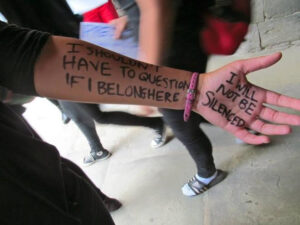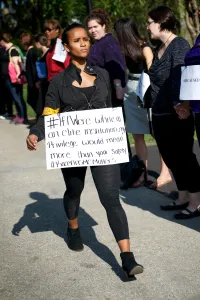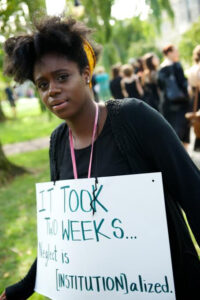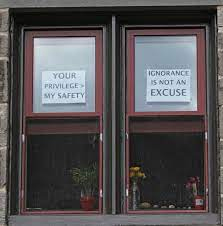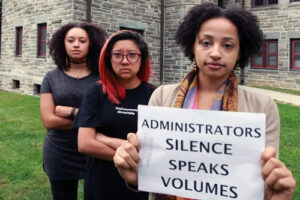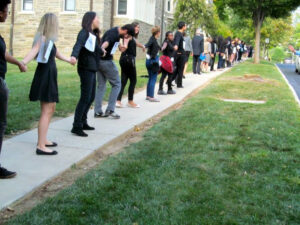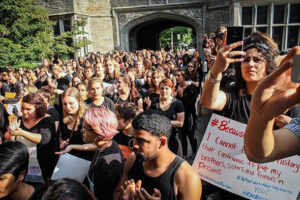Although Bryn Mawr was founded two decades after the end of the Civil War, it was shaped by principles of racial separatism and subordination that persist in our own time. In September 2014, two Bryn Mawr students symbolically recreated the Mason-Dixon line on the floor of their residence hall and hung a Confederate Flag on a publicly visible wall in their dorm room. The students defended their actions as an expression of Southern pride. Other students and faculty mobilized to educate the community about the Confederate Flag’s popularization in the latter half of the twentieth century as a symbol for all who opposed integration and the equality of Black and Brown people in the United States.
In the following weeks, BIPOC students and the residence hall’s Dorm Leadership Team protested the College administration’s slow response to the incident and perceived acceptance of the students’ claim that no offense was meant. The Tri-College chapter of the NAACP mobilized a mass demonstration, in which more than 550 students, staff, faculty, administration, alumni, and trustees linked arms in a human chain of solidarity against hate that encircled Pembroke and Rockefeller Halls. Participants highlighted the non-singularity of the Confederate Flag incident, drawing attention to other recent discriminatory acts on campus.
How do histories of discrimination and exclusion in Antebellum America continue to shape issues of race, place, and belonging at Bryn Mawr today?

